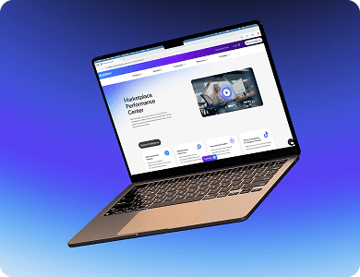Capability Assessments: Detecting Gaps in Digital
Drive ecommerce success with our capability assessment framework from Pattern AU. Learn how we assess businesses for digital growth & continued success.
As ecommerce sales contribution continues to grow, digital channels are under the spotlight. Increased reliance on the channel brings with it an opportunity to secure additional support and investment. Many brands and retailers are now asking their digital teams blue sky questions about how big the ecommerce channel can be, how quickly it can grow, and what the optimal investments are. This is music to the ears of most digital leaders who can now look beyond incremental short term investments, to long term strategic investments that are going to deliver significant growth leaps.
Common Questions
One of the most common questions we are being asked to help our clients answer is “how should I structure my omnichannel operations and do I have the right mix of capabilities to deliver sustained ecommerce growth.” In the past, omnichannel structure and capabilities have grown and evolved organically, without the appropriate level of strategy and planning. Assumptions are sometimes made that digital people understand all elements of digital equally well and that one person’s capabilities can be relied upon to deliver a successful ecommerce function.
This is similar to assuming that your plumber can fix your lights. You need a range of people and skillsets to keep your house operational, and so too do you need a range of skills to build, grow and maintain a successful omnichannel business. Some of the core capabilities needed include strategic planning, digital marketing, trading, CRM, planning, supply chain, logistics, analytics, technology, customer service and design.
Capability Assessment
We recently ran a capability assessment for a FMCG brand looking to expand into international markets via marketplace channels. The approach we took included 4 phases:
- Best practice scorecard – define best practice within active ecommerce channels, audit brand execution, identify gaps and prioritise opportunities.
- Capability requirements – identify capabilities required to execute active and future ecommerce channels in line with best practice.
- Capability assessment – conduct a situational audit to uncover ways of working and capabilities, conduct gap analysis.
- Capability enhancement plan – develop a high-level action plan to address capability gaps.
The outcome of these exercises will vary greatly depending on the digital maturity of the organisation, what they want to achieve and the ecommerce channels they plan to sell through.
Capability Gaps
The way in which capability gaps can be addressed, typically falls within one of four areas:
- Projects – one-off projects to get foundational requirements in place including new tools, strategies or quick win tasks. For example, one of the key gaps for our client was in product content. While there does need to be some capability within the business to optimise content ongoing, the foundational requirements could be addressed through a content toolkit project and implementation of a DAM or PIM to house the content.
- Structure – revisions to the existing structure are often needed or recruitment of additional resource may need to be considered to address capability or capacity gaps. For our client, the capability assessment highlighted that while they had strong digital marketing capability in the business, they did not have commercial ecommerce trading capability and this was needed to drive profitable ecommerce sales growth.
- Ways of working – some capability gaps can be addressed through new or revised processes and ways of working. Such revisions can help existing teams to work more effectively, efficiently or consistently. Clear KPIs, reporting and automated dashboards are areas that we often find lacking in many businesses, but optimisation can have a hugely positive impact on team alignment and performance.
- Training – training programs to upskill existing teams are often needed. Comprehension of ecommerce and digital marketing can vary greatly within many organisations and one of the most effective training approaches can be to put all departments through baseline training. This ensures that all teams are equipped with the knowledge they need to at least have conversations about digital initiatives. Beyond this, more in-depth training may in specialist areas.
The outcome of any capability assessment should be a phased roadmap that includes all the jobs to be done with assigned responsibilities. If you would like to discuss how to approach a capability assessment for your organisation, please get in touch.


.jpg)





.jpg)

